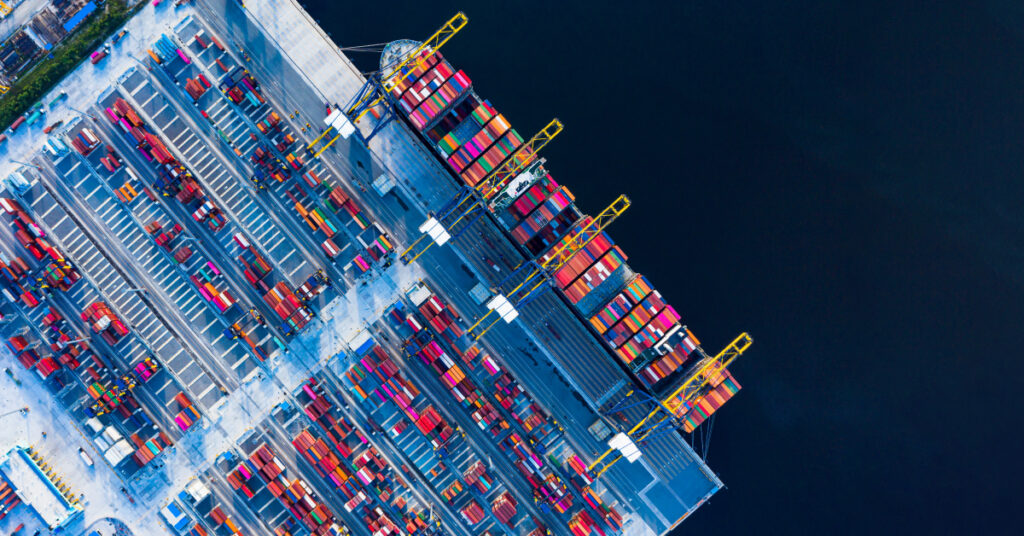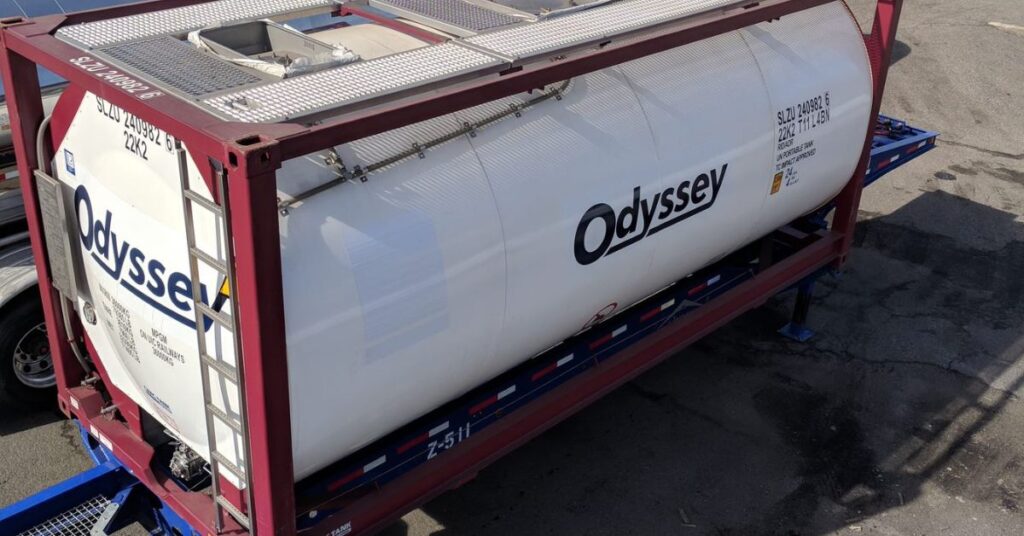A year ago, Maneet Singh joined the Odyssey Logistics team as its new CIO, sparking a wave of technological synergies across the organization. Singh’s knack for inspiring IT teams, cultivating robust stakeholder relationships, and optimizing IT investments has been pivotal in driving transformation.
Singh, a veteran of numerous digital and business transformations, collaborates with the commercial team to develop insightful content for Odyssey’s various platforms.
A notable example is the recent AI Meets Critical Intelligence research brief, which encapsulates the key findings from Odyssey’s 2024 Transportation Management Outlook Study.
The research brief delves into how artificial intelligence (AI) is revolutionizing the logistics and supply chain industry. It reveals that only 25% of respondents are currently utilizing new applications or insights from AI, while 46% prioritize cybersecurity over traditional concerns such as fuel prices. The survey also found that 52% of companies support a human-driven approach to AI, bolstered by AI tools and insights, and half of them report technology upgrades as a strategy for increasing resilience, with AI at the forefront of this strategy.
Let’s retrace some of the content shared by Singh in his first year as CIO at Odyssey Logistics, revisiting the insights shared, the milestones met, and the ongoing transformation that Odyssey is navigating.
Integrating People, Processes and Systems
In Tech adoption is a losing strategy: how should IT rethink success?, Singh and his team explore why IT teams need to shift from supporting projects to supporting business outcomes. They pose challenging questions like: What do outcomes really look like? How can IT teams and their companies develop a deeper understanding of ROI and its specific implications for their business? And, how can a people-centered technology approach facilitate this shift?
“Companies should avoid the easy trap of an overly mechanistic take on outcomes,” Singh warns. “To make a successful shift to people-centered, outcomes-based technology, companies should ensure that, whatever IT solutions they leverage, they have clearly defined sets of metrics that are simultaneously precise enough to track while also expansive enough to capture the full spectrum of what value means to a modern company.”
Singh continues the outcomes conversation in The outcomes orientation challenge in IT, with a focus on improving productivity and streamlining the customer experience. He writes about how improving productivity and enhancing customer experience share a critical connection in the logistics space: the link between technology and people.
A Tech-Enabled Future for Logistics
Technology continues to play an increasingly important role in shippers’ supply chain and logistics management strategies, and Singh explains the connection in 2024 Crossroads: Market & Tech Trends That are Reshaping Supply Chains. “AI represents the frontier. Its prowess lies in harnessing the vast troves of data generated by companies daily, particularly concerning sustainability, to derive fresh insights and analyses,” he says. “Enterprises generate substantial unstructured data relevant to sustainability, often overwhelming and disorganized for manual processing.”
In Thinking big: Odyssey’s vision for a tech-enabled future, Singh sifts through the initial hype of AI and discusses how companies can harness its true potential, noting that Gartner predicts that by 2025, AI will be a workforce partner for 90% of companies globally. “In the logistics industry, we know very well that the keys to success often lie in speed and adaptability,” he writes. “Technological advancements over the last decade have dramatically transformed how we work, yet we are only beginning to tap into the possibilities.”
Singh dives deeper into the AI discussion in AI Revolution: How Artificial Intelligence is Transforming Logistics and Shipping, where he writes about how algorithms can then pick the most cost-effective, efficient routes for drivers—strategies that lead to lower fuel consumption, faster delivery time and fewer carbon emissions. Artificial intelligence is also being used to analyze past sales data, market trends and customer behavior patterns. “Combined, these data points help companies predict future demand for their products, optimize inventory levels and avoid costly over- and under-stock situations,” Singh adds.
What Does the Future Hold?
Singh isn’t afraid to pull out his crystal ball and make some bold predictions about what’s coming next for logistics and technology. What’s coming next for logistics & transportation in 2024?, outlines some of the different ways that businesses move goods across wider markets so that consumers can buy and enjoy a more diverse range of products.
“By serving as the conduit between companies and their customers,” Singh writes, “efficient logistics and transportation systems help improve access to essential goods, support global interconnectedness and enhance our quality of life.”
And in What we must do to create nationally secure and resilient supply chains, Singh was interviewed on the hot topic of supply chain resiliency—an imperative that was brought to light by the supply chain struggles companies experienced during the global pandemic. “The cascading logistical problems caused by the pandemic and the war in Eastern Europe, have made securing a reliable supply chain a national imperative,” Singh points out. “In addition, severe cyberattacks like the highly publicized Colonial pipeline attack, have brought supply chain cybersecurity into the limelight.”
Unlocking Higher Levels of Visibility
Digital transformation is another area that Singh is keyed into, as evidenced by the advice he shares in Navigating digital transformation of the supply chain. Some of the strategies he advocates for include replacing monolithic tech stacks, embracing AI, and leveraging the power of integrated best-of-breed solutions.
Finally, in Using freight technology to unlock supply chain visibility, Singh talks about how visibility has long been the “Holy Grail” of supply chain management, and how advancements in technology and changing customer expectations have turned into a key, foundational capability.
“Because transportation, freight and logistics all play critical roles in the product-focused supply chain,” he writes, “infusing technology into some or all of these processes can help unlock higher levels of visibility.”
The Digital Odyssey Continues
Reflecting on the past twelve months, it’s clear that Odyssey Logistics is on an incredible journey of digital transformation. This journey, driven by a collaborative effort across the organization, has been marked by the integration of people, processes, and systems, and the strategic use of advanced technologies.
Singh believes “the future holds immense promise as we continue to unlock higher levels of visibility and explore the untapped potential of technology in logistics.” Looking ahead, Singh is excited about the opportunities that lie before Odyssey and is committed to reshaping supply chains for a more connected and resilient future.








